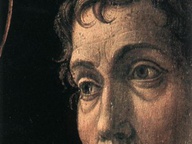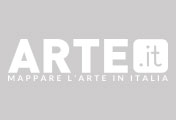Marya Kazoun. First Act

Marya Kazoun, First Act, Palazzo Pitti, Firenze
Dal 15 December 2022 al 29 January 2023
Firenze
Luogo: Palazzo Pitti
Indirizzo: Piazza de' Pitti 1
Come si crea un nuovo mondo libero da inquinamento, disastri ambientali, riscaldamento globale? L’artista libano-canadese Marya Kazoun lo spiega attraverso un’installazione ispirata al presepe: ne sono protagoniste le sagome quasi arboree dei Magi, realizzate in ovatta – alte 2,60 metri – e rivestite da una stoffa bianco latte. Non portano in dono oro, incenso e mirra ma energia pulita, rappresentata dalle pale eoliche montate sulla loro sommità. First Act, questo il nome dell’opera, trasmetterà il suo messaggio ambientalista per tutte le Feste di Natale e fino al 29 gennaio dalla Sala Bianca, lo spazio più prestigioso di Palazzo Pitti a Firenze.
Il vento, che rappresenta il transitorio e l'inafferrabile, è in quest’opera il respiro vitale dell'universo e di chi lo abita. In opposizione ad esso, la presenza minacciosa di uno sciame di locuste, realizzate in vetro a Murano, simboleggia la rovina climatica sempre più incombente sul destino del pianeta.
L'artista associa così l’antico disastro biblico a quello ecologico attuale, per spingere lo spettatore a riflettere e agire. La nascita di un mondo nuovo - la scultura sferica al centro - è ammirata da sei figure disposte a coppie, che rappresentano l’unione tra gli esseri umani. Non mancano, seguendo la tradizione cristiana, le figure della Madonna e san Giuseppe, del bue e dell’asinello, che vegliano premurosamente sul nuovo nato. Lo spazio metafisico della Natività di Marya Kazoun - dove incubi, simboli e utopia si fondono - è abitato da creature che aprono una finestra su futuri possibili, da cui lo spettatore può affacciarsi per indagare sé stesso e la realtà che lo circonda.
Il direttore delle Gallerie Eike Schmidt: “Proteggere il patrimonio artistico e conservare l’eredità paesaggistica e ambientale sono doveri seri e urgenti che non devono mai entrare in conflitto, ma favorirsi a vicenda. Nell’installazione First Act, Marya Kazoun prende avvio dalla tradizione presepiale e ci fa riflettere sul più grave pericolo che il nostro pianeta sta correndo: quello di perdere l’equilibrio ecologico, mettendo pertanto a rischio la sopravvivenza del genere umano. L’opera evidenzia ed esemplifica come la natura naturans, insita in ogni atto creativo, necessariamente invoca il massimo rispetto e impegno per il creato, mentre la natura naturata a sua volta fa risplendere e promuove l’azione miracolosa della natura naturans”.
Aggiunge l’artista Marya Kazoun: “I sussurratori del vento hanno sempre abitato questo luogo, e sono un’estensione delle voci del passato”.
Marya Kazoun, nata a Beirut nel 1976, è un'artista interdisciplinare. Attualmente vive e lavora tra New York e Venezia.
Le sue opere sono principalmente installazioni e performance, spesso combinazione di entrambe. La maggior parte dei suoi lavori sono site-specific e possono essere ampliati e sviluppati nel tempo. Ogni opera ha una propria narrazione e storia che deriva dal viaggio personale dell’artista, dai suoi ricordi d'infanzia e dal suo background culturale.
Kazoun ha partecipato a diverse mostre personali e collettive a livello internazionale. Ha partecipato per ben tre volte alla Biennale di Venezia, nel 2005, nel 2009 e nel 2013 quando è stata chiamata a rappresentare la città di Venezia. Suoi lavori sono stati esposti al Museo Puškin di Mosca, al Museo d'Arte Moderna di Klagenfurt, alla Biennale di Sharjah (Emirati Arabi Uniti), al World Economic Forum di Davos, alla Biennale di Poznań in Polonia, al Boca Raton Art Museum in Florida e all’Ermitage di San Pietroburgo.
Il vento, che rappresenta il transitorio e l'inafferrabile, è in quest’opera il respiro vitale dell'universo e di chi lo abita. In opposizione ad esso, la presenza minacciosa di uno sciame di locuste, realizzate in vetro a Murano, simboleggia la rovina climatica sempre più incombente sul destino del pianeta.
L'artista associa così l’antico disastro biblico a quello ecologico attuale, per spingere lo spettatore a riflettere e agire. La nascita di un mondo nuovo - la scultura sferica al centro - è ammirata da sei figure disposte a coppie, che rappresentano l’unione tra gli esseri umani. Non mancano, seguendo la tradizione cristiana, le figure della Madonna e san Giuseppe, del bue e dell’asinello, che vegliano premurosamente sul nuovo nato. Lo spazio metafisico della Natività di Marya Kazoun - dove incubi, simboli e utopia si fondono - è abitato da creature che aprono una finestra su futuri possibili, da cui lo spettatore può affacciarsi per indagare sé stesso e la realtà che lo circonda.
Il direttore delle Gallerie Eike Schmidt: “Proteggere il patrimonio artistico e conservare l’eredità paesaggistica e ambientale sono doveri seri e urgenti che non devono mai entrare in conflitto, ma favorirsi a vicenda. Nell’installazione First Act, Marya Kazoun prende avvio dalla tradizione presepiale e ci fa riflettere sul più grave pericolo che il nostro pianeta sta correndo: quello di perdere l’equilibrio ecologico, mettendo pertanto a rischio la sopravvivenza del genere umano. L’opera evidenzia ed esemplifica come la natura naturans, insita in ogni atto creativo, necessariamente invoca il massimo rispetto e impegno per il creato, mentre la natura naturata a sua volta fa risplendere e promuove l’azione miracolosa della natura naturans”.
Aggiunge l’artista Marya Kazoun: “I sussurratori del vento hanno sempre abitato questo luogo, e sono un’estensione delle voci del passato”.
Marya Kazoun, nata a Beirut nel 1976, è un'artista interdisciplinare. Attualmente vive e lavora tra New York e Venezia.
Le sue opere sono principalmente installazioni e performance, spesso combinazione di entrambe. La maggior parte dei suoi lavori sono site-specific e possono essere ampliati e sviluppati nel tempo. Ogni opera ha una propria narrazione e storia che deriva dal viaggio personale dell’artista, dai suoi ricordi d'infanzia e dal suo background culturale.
Kazoun ha partecipato a diverse mostre personali e collettive a livello internazionale. Ha partecipato per ben tre volte alla Biennale di Venezia, nel 2005, nel 2009 e nel 2013 quando è stata chiamata a rappresentare la città di Venezia. Suoi lavori sono stati esposti al Museo Puškin di Mosca, al Museo d'Arte Moderna di Klagenfurt, alla Biennale di Sharjah (Emirati Arabi Uniti), al World Economic Forum di Davos, alla Biennale di Poznań in Polonia, al Boca Raton Art Museum in Florida e all’Ermitage di San Pietroburgo.
SCARICA IL COMUNICATO IN PDF
COMMENTI

-
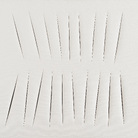 Dal 17 October 2025 al 15 February 2026
Torino | Fondazione Accorsi Ometto
Dal 17 October 2025 al 15 February 2026
Torino | Fondazione Accorsi Ometto
Da Fontana a Crippa a Tancredi. La formidabile avventura del Movimento spazialista
-
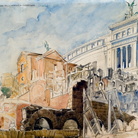 Dal 17 October 2025 al 22 February 2026
Roma | Musei Capitolini Centrale Montemartini
Dal 17 October 2025 al 22 February 2026
Roma | Musei Capitolini Centrale Montemartini
Maria Barosso, artista e archeologa nella Roma in trasformazione
-
 Dal 17 October 2025 al 1 February 2026
Roma | Palazzo Cipolla Museo del Corso - Polo Museale
Dal 17 October 2025 al 1 February 2026
Roma | Palazzo Cipolla Museo del Corso - Polo Museale
Dalí. Rivoluzione e Tradizione
-
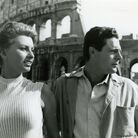 Dal 15 October 2025 al 18 January 2026
Roma | Castel Sant’Angelo
Dal 15 October 2025 al 18 January 2026
Roma | Castel Sant’Angelo
Roma e l’invenzione del cinema. Dalle origini al cinema d’autore 1905-1960
-
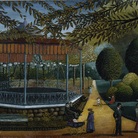 Dal 16 October 2025 al 25 January 2026
Padova | Palazzo Zabarella
Dal 16 October 2025 al 25 January 2026
Padova | Palazzo Zabarella
Modigliani Picasso e le Voci della modernità dal Museo LaM
-
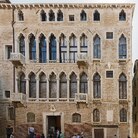 Dal 15 October 2025 al 12 January 2026
Venezia | Museo Fortuny
Dal 15 October 2025 al 12 January 2026
Venezia | Museo Fortuny
Antonio Beato. Ritorno a Venezia. Fotografie tra viaggio, architettura e paesaggio
